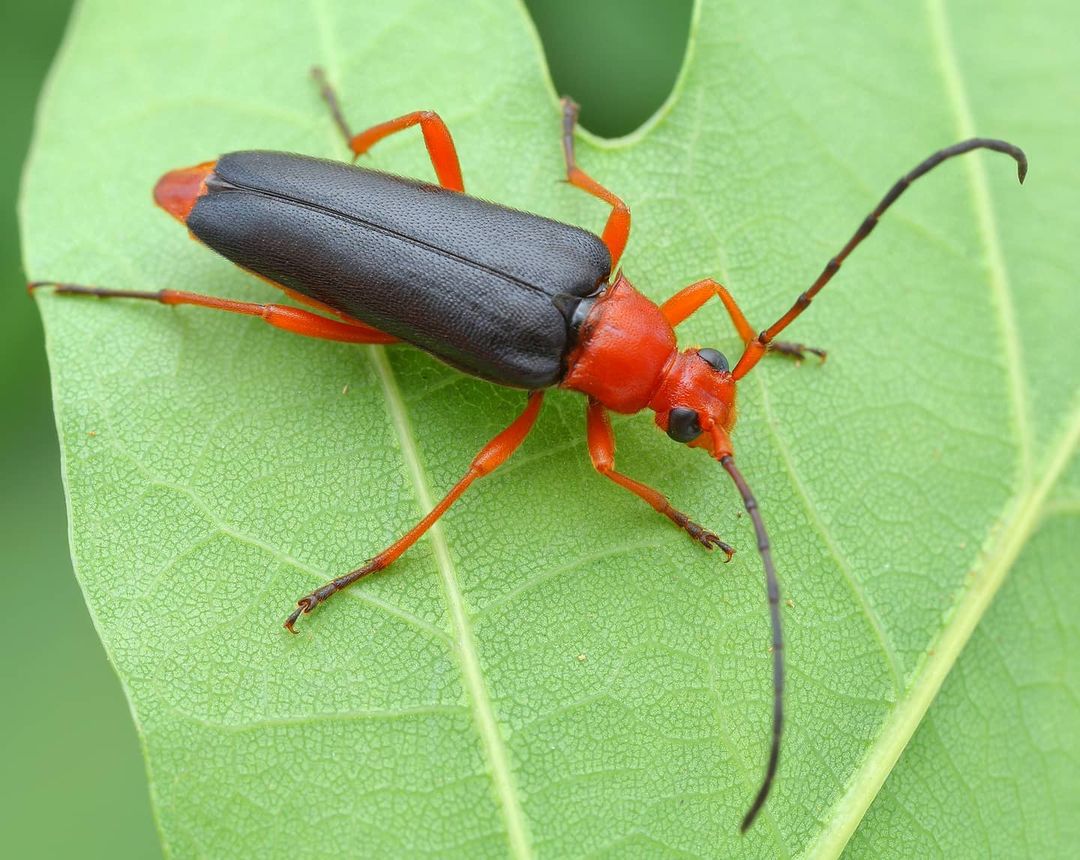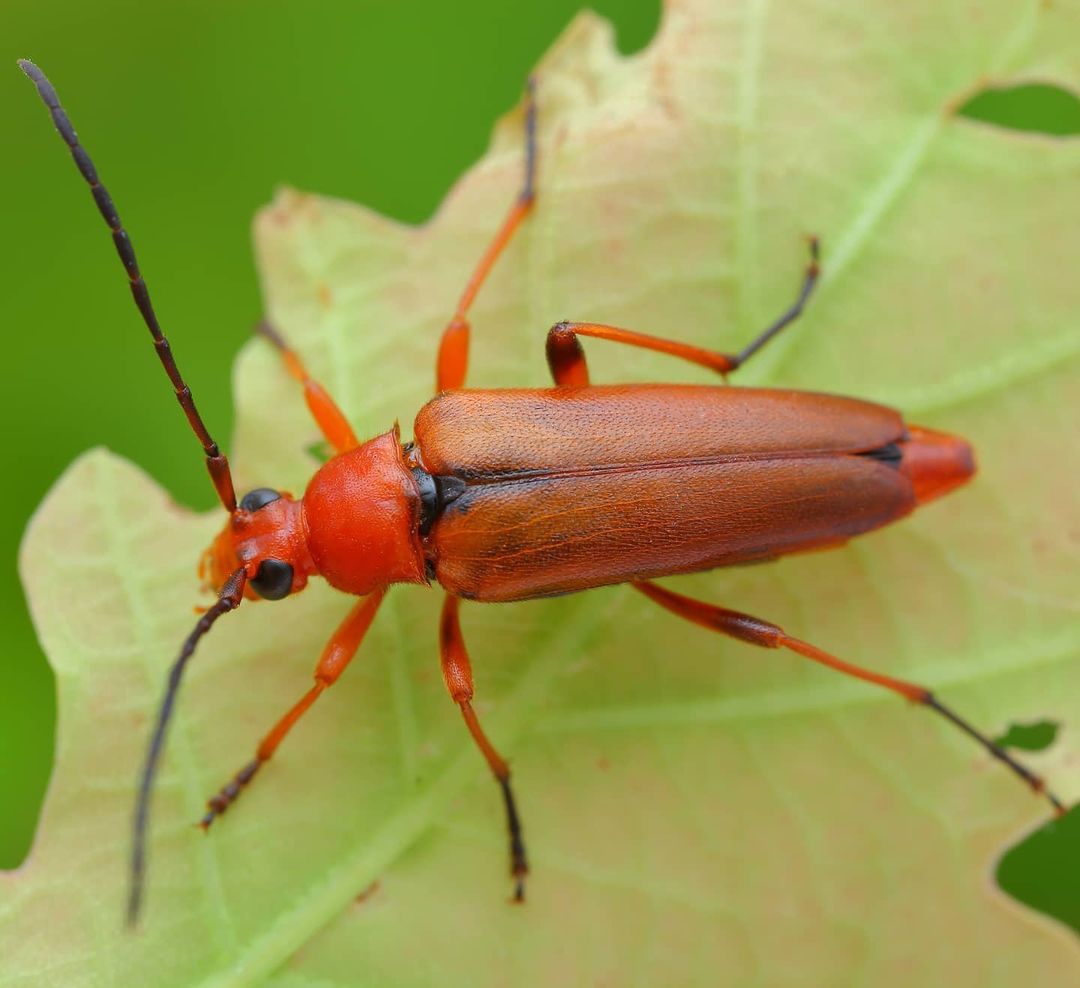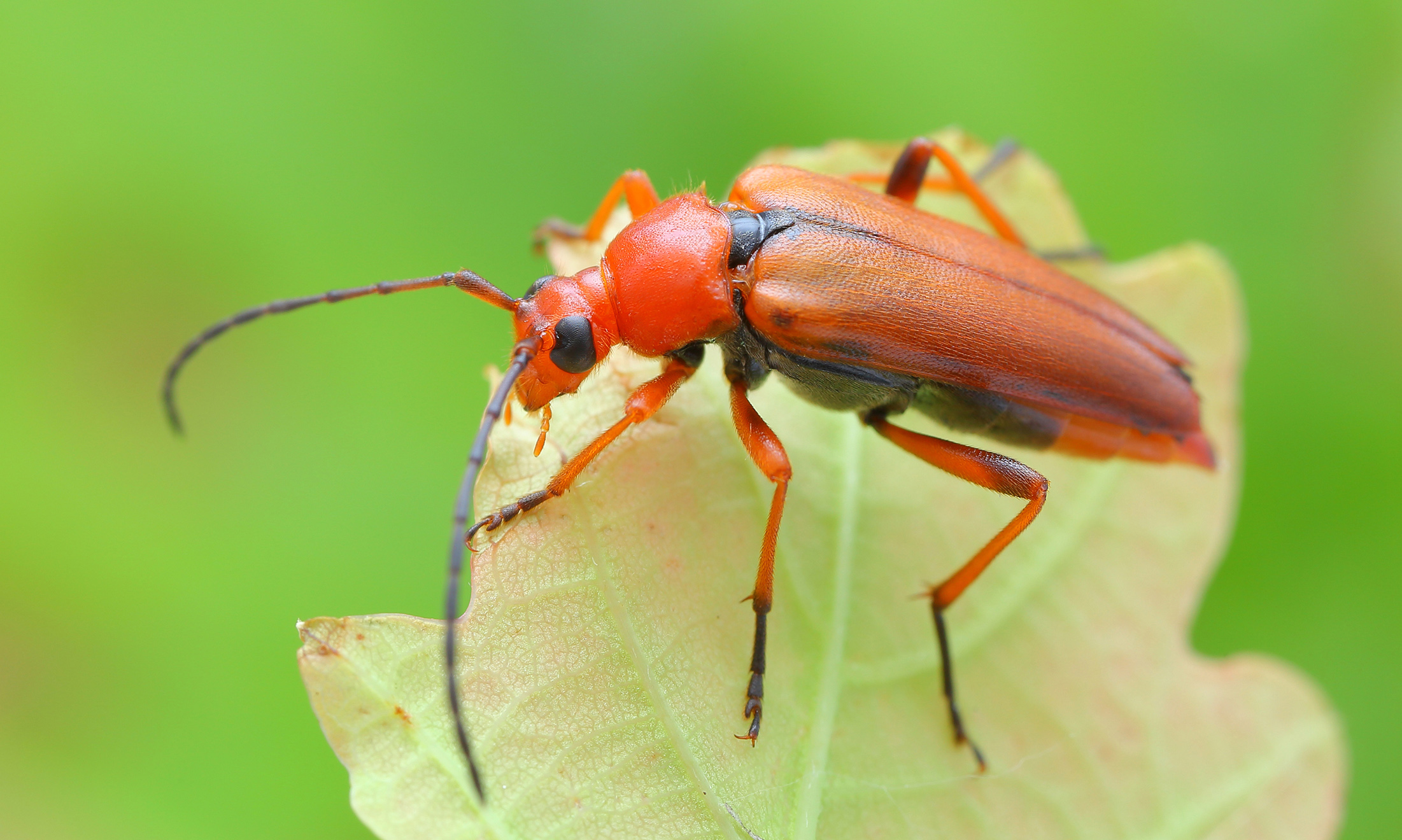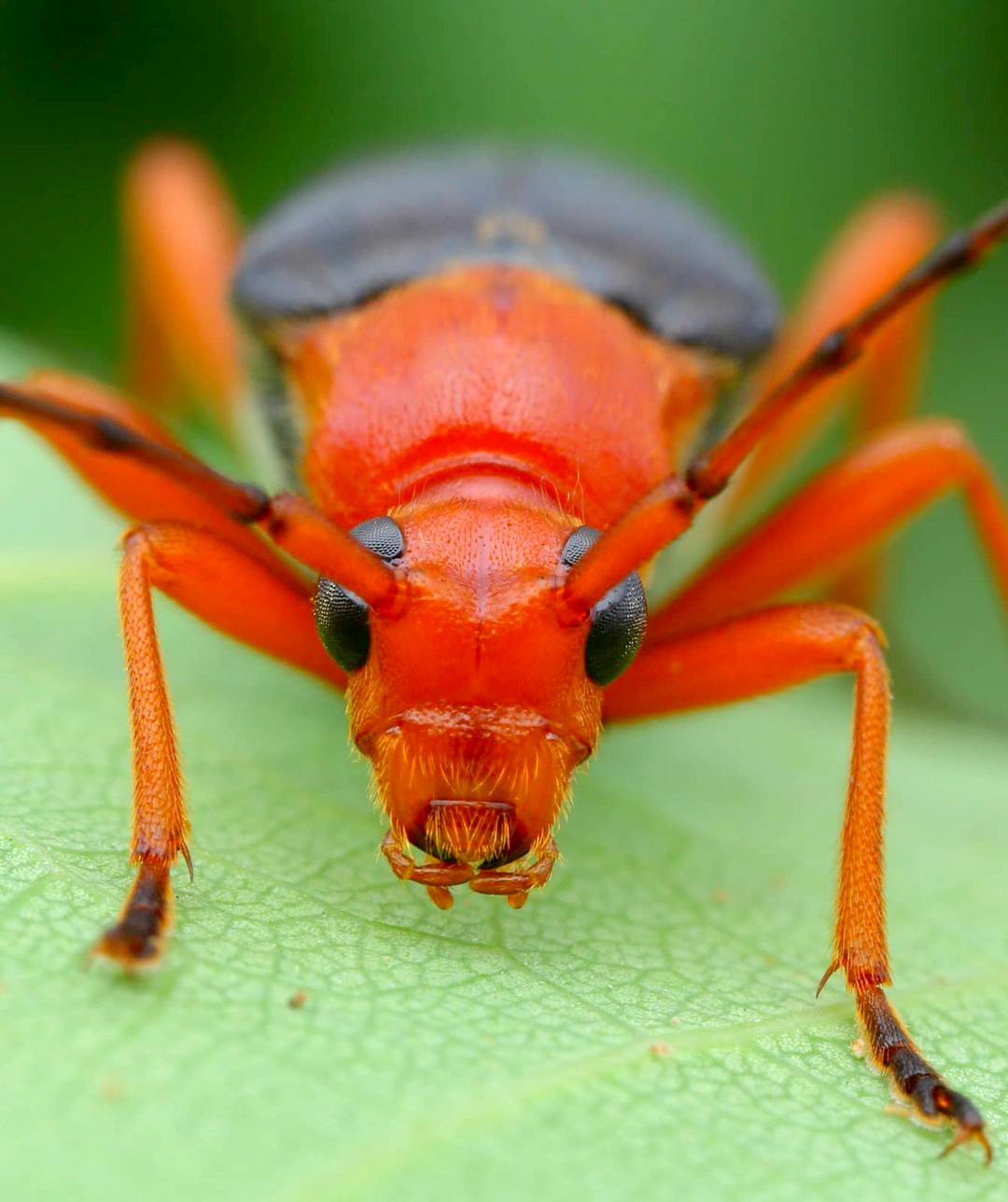ssp. revestita (Linnaeus, 1767)
[= Strangalia revestita (Linnaeus, 1767)]
[= Leptura villica Fabricius, 1775]
[= Stenocorus ruber Geoffroy, 1785]
[= Leptura fuscicornis Marsham, 1802]
Subfamilia: LEPTURINAE / Tribus: LEPTURINI

[Photo © David Navrátil, click on the picture for 4K resolution]
Pedostrangalia revestita is very polyphagous but oak is preferred in Central Europe. Larvae of this species feed in dead red-brown and relatively moist wood in close contact with living tissue, such as the bases of dead branches surrounded by living callus. The pupal cell as well as the larval galleries are filled with typical long red wood fibres created by the larvae. Pupation takes place in wood in the spring. Adults, active from May to early August, are predominantly diurnal, visit fresh juicy wounds of trees and occasionally blossomig bushes and trees (Cornus, Crataegus, Swida, Prunus, etc.). [✮][✳]
Pedostrangalia revestita has been described as Leptura revestita from Germany by by Carl Linné in 1767 [❖]/
Body length: 8 - 15 mm Life cycle: 2 - 3 years Adults in: May - August Host plant: polyphagous in deciduous trees (Quercus, Fagus, Carpinus etc.) Distribution: Portugal, Spain, France, Corsica, Italy, Sicily, Slovenia, Croatia, Bosnia-Herzegovina, Serbia, Greece, Romania, Hungary, Austria, Switzerland, Germany, Luxembourg, Belgium, Great Britain, Netherlands, Denmark, Czechia, Slovakia, Poland, Sweden, Ukraine, Turkey
The mounted beetles was collected in: (M) - Kolby steppe in Pouzdřany environs (Břeclav district, South Moravia, Czechia) on June 6, 2021; (S) - Čierna hora (hill), Kamenica nad Hronom environs (215 m a.s.l., Nové Zámky district, Nitra region, Slovakia) on May 6, 1990. The living specimens were photographed in Hungary in May 2021 and2023.Collected by David Navrátil, Michal Hoskovec and Nikola Rahmé
[✮]
Sláma M.E.F.:
Tesaříkovití – Cerambycidae České republiky a Slovenské republiky / Cerambycidae of the Czech Republic and Slovak Republic.
Milan Sláma private printing, Krhanice, 383pp [pages 229-231], 1998 [ISBN: 80-238-2627-1]. [download]
[✳]
Danilevsky M.L.:
Longicorn beetles (Coleoptera, Cerambycoidea) of Russia and adjacent countries. Part 1.
Higher School Consulting, Moscow, 550pp [pages 296-298], 2014. [download]
[❖]
Linné C.:
Systema Naturæ.
Editio Duodecima Reformata, Laurent Salvius, Holmiæ 1 (2): 533-1327 [page 638], 1767. [download]

[Photo © Milan Sláma]
Pedostrangalia revestita is known for its color variability. Adults usually have a red pronotum and blue-black elytra, rarely yellow-red elytra, and very rarely partly dark and partly red. Very rarely, the imago can be completely black. The specimens shown in the upper image (collected in Czechia and France) come from the collection of Milan Sláma.




[Photo © Nikola Rahmé]

[Photo © Nikola Rahmé]
| Subfamilia | Lepturinae Latreille, 1802 |
| Tribus | Lepturini Latreille, 1802 |
| Genus | Pedostrangalia Sokolov, 1897 |
| Subgenus | Pedostrangalia Sokolov, 1897 |
| Species | Pedostrangalia (Pedostrangalia) revestita (Linnaeus, 1767) |
| Subspecies | Pedostrangalia (Pedostrangalia) revestita revestita (Linnaeus, 1767) |
